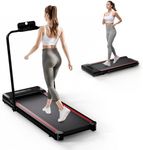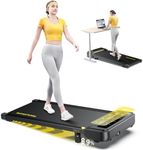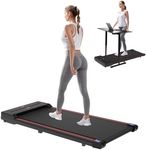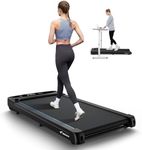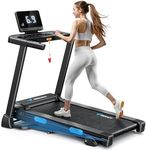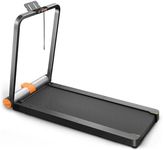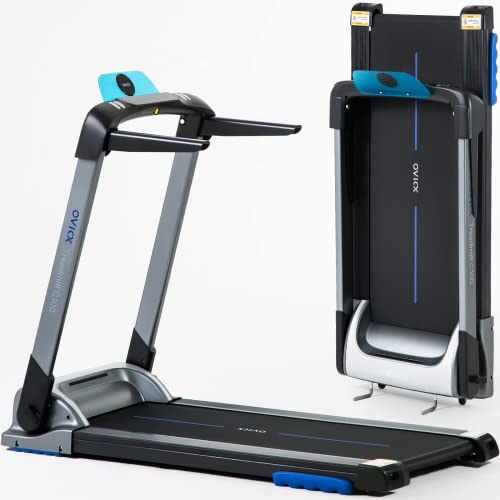Buying Guide for the Best Walking Treadmill For Seniors
Choosing the right walking treadmill for seniors involves considering several key factors to ensure safety, comfort, and effectiveness. It's important to focus on features that cater to the specific needs of older adults, such as ease of use, stability, and appropriate speed settings. Here are some essential specifications to look for and how to navigate them to find the best fit for your needs.Speed RangeSpeed range refers to the minimum and maximum speeds the treadmill can operate at. For seniors, it's crucial to have a treadmill with a lower starting speed, ideally around 0.5 to 1 mph, to accommodate gentle walking. The maximum speed should be sufficient for brisk walking but not necessarily running, typically up to 4 mph. Choose a treadmill with a speed range that matches the user's walking pace and fitness level.
Incline SettingsIncline settings allow the treadmill to simulate walking uphill, which can provide a more challenging workout and help with muscle strengthening. For seniors, a treadmill with adjustable incline settings is beneficial, but it should offer gradual inclines rather than steep ones. Look for treadmills with easy-to-use incline controls and consider the user's physical condition when selecting the incline range.
Cushioning and Shock AbsorptionCushioning and shock absorption refer to the treadmill's ability to reduce impact on the joints during walking. This is particularly important for seniors to prevent injuries and ensure comfort. Treadmills with good cushioning systems can help absorb the shock of each step, making walking easier on the knees and hips. Look for models that highlight their cushioning features and test them if possible to ensure they provide adequate support.
Safety FeaturesSafety features are critical for seniors using treadmills. These can include handrails for stability, emergency stop buttons, and safety key systems that stop the treadmill if the user falls. Ensure the treadmill has sturdy handrails that are easy to grip and positioned at a comfortable height. The emergency stop button should be easily accessible, and the safety key system should be simple to use.
Display and ControlsThe display and controls on a treadmill should be user-friendly and easy to read. For seniors, large, clear displays that show essential information like speed, time, distance, and heart rate are important. The controls should be intuitive, with buttons that are easy to press and understand. Consider the user's comfort with technology when choosing a treadmill with the appropriate display and control features.
Size and PortabilitySize and portability refer to the treadmill's dimensions and ease of movement. Seniors may benefit from a treadmill that is compact and easy to store, especially if space is limited. Some treadmills are foldable and have wheels for easy transport. Measure the available space and consider how often the treadmill will need to be moved when selecting the right size and portability features.
Weight CapacityWeight capacity is the maximum user weight the treadmill can safely support. It's important to choose a treadmill with a weight capacity that exceeds the user's weight to ensure stability and durability. Check the specifications for weight capacity and select a model that provides a comfortable margin above the user's weight.
